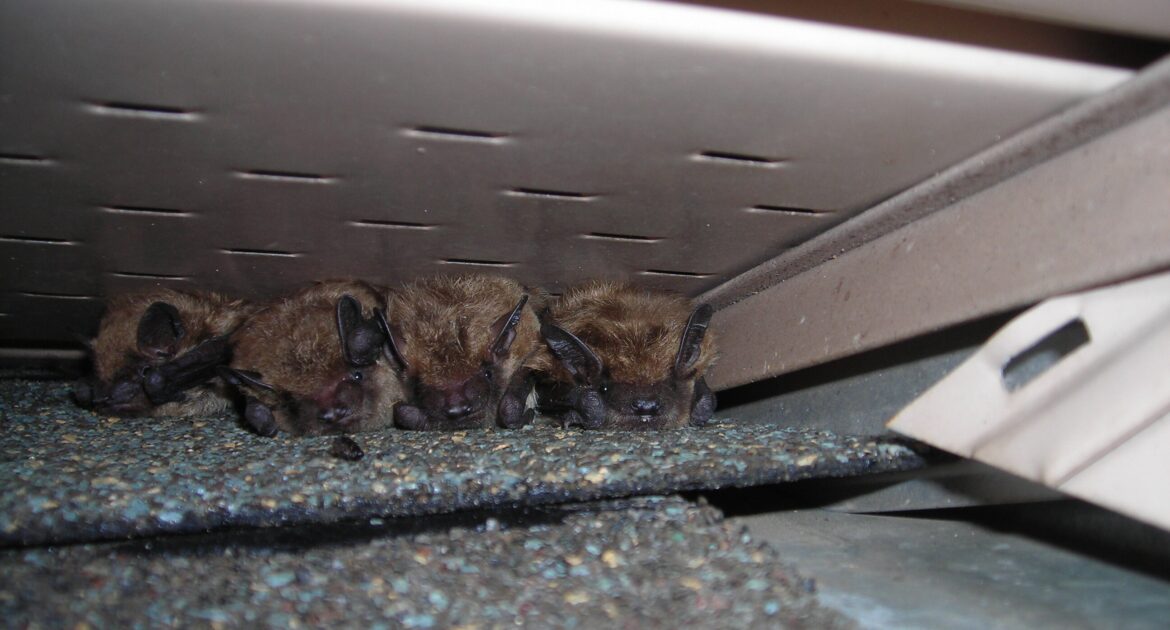Summer is an important time for all wildlife as they prepare for the upcoming winter season, and raise their newborn litters. For bats in particular, the summer months are crucial for reproduction. Since female bats only birth one baby per year between April and June, they must ensure they have a safe place to raise their pup as they gather food.
What are Bats Doing During The Summer
Female bats are great mothers, caring for their newborn pups until they can fly and feed themselves. During their very early stages of growth, small baby bats, also known as pups, will stay in a small tail pouch. This small pouch is used to hold the babies as mothers travel, however the babies are most often left in their den site while their mother collects food.
As humans remain indoors to avoid the swarm of insects like mosquitoes, bats fly out at dusk to feed on an endless supply of protein. Having been in hibernation for several months, their bodies require an abundance of protein to gain strength, and feed their pups. This is great news for any property owner who prefers the air to be insect-free.
Why Are Bats So Important?
Bats are a vital part of our ecosystem. Not only do they make our time outside more comfortable, but without bats crops would quickly be destroyed by insects. As they protect farmer’s fields, they also assist in pollinating them. From flowers to fruits, bats pollinate over 500 species across North America.

If their farming skills aren’t enough, bats are also one of nature’s great gardeners. As bats eat fruits that carry seeds, they leave their droppings all around our communities. This process helps different species of tree and plants to flourish and thrive in new areas. Without bats our world would look a lot different.
Bat Are An Endangered Species
Since bats only birth a single pup per year, their population has a slower rate of growth than many other species of wildlife. Pair a slow growing population with fast growing urban areas, and bats become endangered. One of the biggest contributors to bats becoming an endangered species is a disease called white nose syndrome. This is an extremely harmful fungal infection for bats in hibernation, as it lowers their body’s ability to save energy and warmth. This disease spreads from colony to colony quickly, and has infected 12 different bat species across North America.
To keep bats safe, the Fish and Wildlife Conservation Act was passed in 1980 to protect the species. This law also dictates when bats can be removed from a home. To avoid separating mothers and their babies, bats are removed during the spring before babies have been born, and in the fall months when they are old enough to fly on their own. Since many bat colonies have been forced to find homes in residential or commercial properties in our communities, this law protects the babies and mothers from being separated during any removal process.
How To Help Bats
Bats contribute greatly to today’s world, which is why it is important for us to protect them. One of the best things you can do for local bats is to install a bat house. Bat houses can be found at many department stores, and provide bats with a safe place away from people and predators to raise their young. The more homes that bats are given, the more opportunity they have to thrive, and the less likely they will be to move into your home. Be sure to keep the bat house at the far end of your property.
Another great way you can help bats is to hire a humane removal service when you have a bat problem. Humane wildlife technicians understand bat behaviour, and are able to safely return them outdoors without causing them harm. To learn more about how you can protect bats during a removal process visit Skedaddle Humane Wildlife Control and discover how their services keep bats colonies safe.




